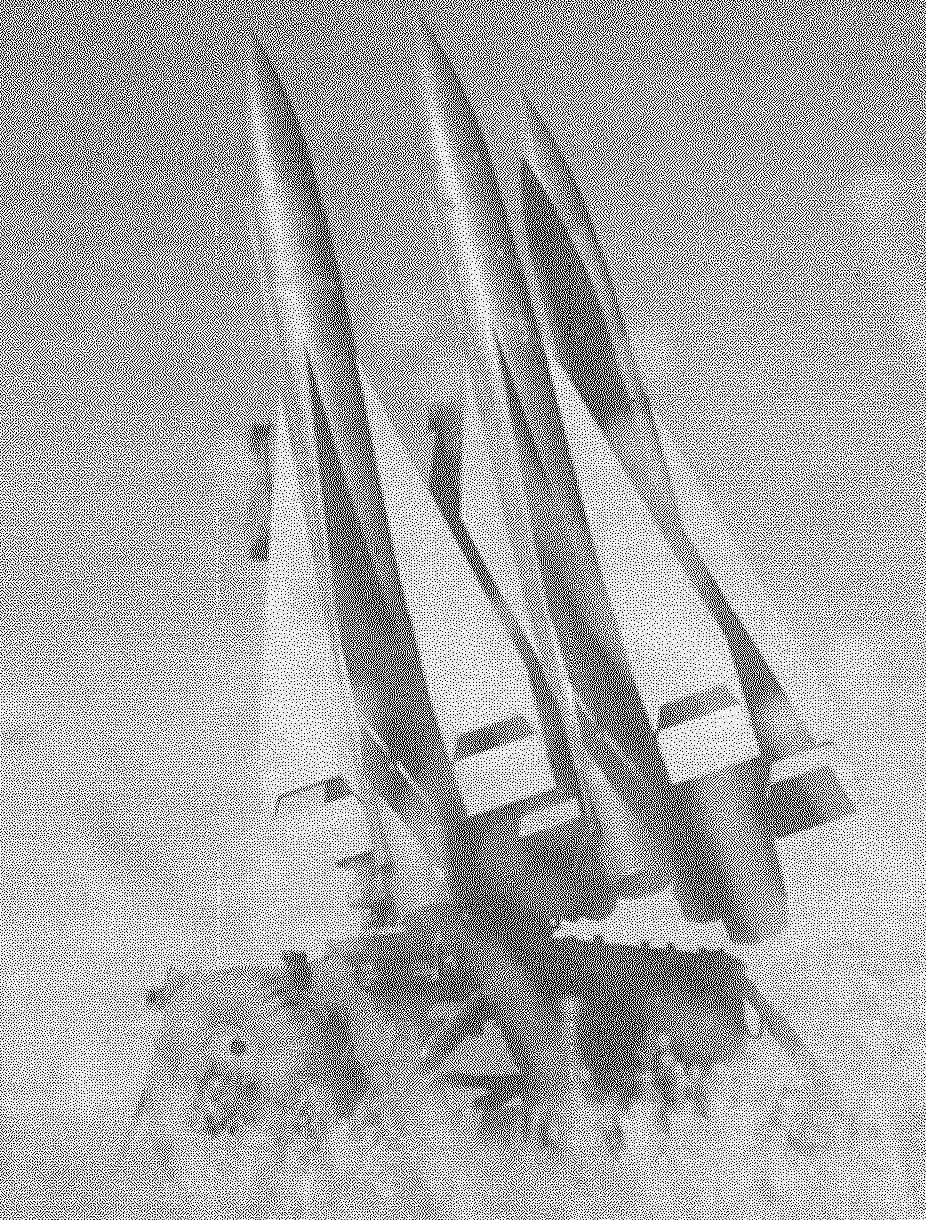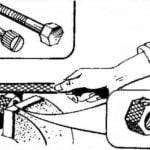 On 12 February 1960 on the information channels of the entire world was spread the message of the correspondent of the Agency “United Press international”, which referred to the statement of the head of the Department of research and development at the headquarters of the U.S. army of Lieutenant General A. Trudeau, 29 January for the first time a ballistic missile destroyed in the air with another rocket In the message also stated, used as a target unguided ballistic missile “Onest John” was intercepted and destroyed anti-aircraft missile MIM-23A complex “hawk” during the test on the range white Sands In confirmation of this message in the Ministry of defense was shown a film taken in the test process However, with all technical military significance of this achievement of this quality complex “hawk” missiles and MIM-23A were never in demand in their future fighting career.
On 12 February 1960 on the information channels of the entire world was spread the message of the correspondent of the Agency “United Press international”, which referred to the statement of the head of the Department of research and development at the headquarters of the U.S. army of Lieutenant General A. Trudeau, 29 January for the first time a ballistic missile destroyed in the air with another rocket In the message also stated, used as a target unguided ballistic missile “Onest John” was intercepted and destroyed anti-aircraft missile MIM-23A complex “hawk” during the test on the range white Sands In confirmation of this message in the Ministry of defense was shown a film taken in the test process However, with all technical military significance of this achievement of this quality complex “hawk” missiles and MIM-23A were never in demand in their future fighting career. The tasks that were set in the early 1950s the developers of the anti-aircraft missile complex “hawk” (Hawk in the hawk, but with time came more complex interpretation of this designation is “Homing All the Way Killer” interceptor homing in all directions) were quite “mundane” in those years, almost immediately after the first SAM capable of intercepting air targets flying at high and medium altitudes, there is a need to increase the efficiency of combat aircraft, flying at low altitudes It was due to the fact that air force leadership of the most developed countries engaged in the revision of the basic principles of using military aircraft Aircraft began to learn to “dive” below 1 — 2 km — minimum elevation for the effective application of the first anti-aircraft missiles, around their locations In the mid-1950s similar ways of overcoming missile defense systems were evaluated as highly effective In turn a need to create means to counter aircraft that used the new tactics brought to life the concept of multi-purpose air defense system — systems designed to defeat single and group air targets flying at low and medium altitudes at subsonic and supersonic speeds One such air defense system and became a “hawk”.
Initially, the new complex was developed according to the requirements of the U.S. army as a complement to the already adopted system of “Nike-Ajax” In June 1954 to work on a new SAM (when he was designated SAM-A-18) started the firm “Raytheon” This company already had experience of creating such systems — one of them was “Park”, which in 1950 for the first time in the US was destroyed by aerial target In the development of this area in the early 1950-ies specialists of the firm “Raytheon” has been performed a number of fundamental studies associated with the establishment of systems for defense against low-flying aircraft One of their results was the development of two new types of radar pulse and continuous wave.
The development of anti-aircraft missiles was conducted at the jet propulsion division Redstone Arsenal, U.S. army.
Several new requirements and tasks set before the developers of “the hawk”, led to the necessity of making a large number of technical solutions that have not been used to create anti-aircraft missile technology In particular, the firm “Raytheon” system “hawk” has developed a semi-active radar guidance system, which allowed to enter in the ground equipment two radar detection and one radar target illumination is One of the detecting stations represented a pulsed radar AN/MPQ-35 destined for big targets, flying at long range and altitudes Other radar AN/MPQ-34 with a continuous wave allows to detect low-altitude target Station target illumination AN/MPQ-ZZ was equipped with two disk antennas and belonged to the category of phase-impulse radar with a continuous wave.
A number of the original features had single-stage rocket and Its body has been made slightly sorawsugar to the rear of the cone In the nose of the missile beneath the radio-transparent fiberglass fairing ogive shape was the antenna semi-active radar homing In the block of the onboard equipment of the missile also includes an electronic evaluator, provides continuous calculation of the optimal trajectory to intercept the target, the power supply system and a number of electronic devices, including miniature gyroscopes and accelerometers.
For the equipment compartment housed compartment with a high-explosive warhead weighing 54 kg and Her plastic body has a shape close to spherical Ready-made fragments of the warhead is made of steel, the Undermining of military equipment could be made as the team of radio controlled fuses and the contact sensor.

Anti-aircraft guided missile MIM-23A:
1 — radiotransparent Radome semi-active radar homing, 2 — Margret, 3 — wing console, 4 — elevon, 5 — nozzle solid propellant motors; 6 — tail fairing, 7 — cover of the control gidrorem, 8 — operational hatch cover, 9 — instrument compartment, 10 — compartment of military equipment 11 — the case of the SRB, 12 — bolt console 13 — front mount wing, 14 — the screw of the telescopic junction of the compartments.
The rest of the fuselage of the rocket was made of steel by deep drawing and was the housing of the propulsion system Solid-propellant motor of KHM-22Е8 developed by “Aerojet”, had two modes a short he developed high thrust at launch and boost phase, and midcourse for a long time gave a small thrust, sufficient to maintain the design supersonic speed, this type of engine operation is made possible through the use of two solid propellant charges placed in the same cell.
The rocket performed on the aerodynamic configuration “tailless” with cross-shaped wing of small aspect ratio wing Four had in plan trapezoidal shape, the Sweep of the consoles at the front edge was 80 degrees the Wing is attached to the missile body by means of bolted connections Along the rear edges of consoles were elevons, hinged to the projections of the end ribs and the ring stiffness, located in the rear of the hull On the same ring were mounted power cylinders of the drive system of the elevons.
The design of each of the consoles consisted of a cladding, made of sheets of aluminum alloy and internal elements, representing the two ribs, two filler cell designs of foil and machined fittings As noted by the developers, in the design of the console was used only three rivets In the manufacturing process of the console all the elements after cleaning, rinsing, and applying the adhesive was mounted in a special Assembly fixture After the build is complete the console was placed in the oven, which produces polymerization of the glue.
The use of such set of progressive for the mid-1950s solutions allowed to reduce launch mass “hawk” to 580 kg two times less than the missile “Nike-Ajax” the missile can intercept targets at ranges from 2 to 32 km (for high-altitude targets) and from 3.5 to 16 km (for low-flying targets) the height of the targets ranged from 30 m to 12 km and maximum speed of the missile were consistent with the numbers of M = 2.5 to 2.7.
First experimental missiles “hawk” XM-3 was produced in the summer of 1955 and in August at the range white Sands was held throwing start, demonstrating high energy characteristics of the rocket In the following months started the launches of more complex programs and after a half dozen flight test, June 22, 1956, a prototype of a “hawk” struck the first aerial target — unmanned jet fighter QF-80, flying at subsonic speed at an altitude of 3300 m.
This successful test has led to a significant acceleration of their pace. So, in 1956 performed 21, 1957 — 27 starts, in 1958-m — 48 launches from time to Time the developers of the new system reported in Newspapers and magazines about the results achieved during the tests, thus, the greatest popularity was gained by the intercepting aircraft target (QF-80 flying at a height less than 30 m, and the target XQ-5, flying at a speed corresponding to the number M = 2 at a height of 10.7 km.
However, at the stage of final testing of the system it was necessary to make a number of changes However, they were not associated with the revealed structural flaws, and with the decision of the military leadership in accordance with the original requirements of the complex “hawk” was to be used both with stationary and moving positions, similar to different variants of “Nike” But in March 1959, the joint chiefs of staff made the decision about the use of the “hawk” and for the decision of problems of military defense as a result, developers have demanded a fast and easy transport of all elements, transport aircraft, helicopter or vehicles with trailers, This meant that all the components of the “hawk” had to have the minimum possible size and weight, as well as elements of the control equipment, which could be replaced in a short time the Complex also had to work in a wide range of temperature and environmental conditions, without the use of special measures for protection from rain, hail or sand storms.
During 1959 — 1960s these problems managed to be solved not only by processing the design, but largely due to the fact that during the production of the missiles was closely monitored the quality of its workmanship and all components have undergone ground testing It became especially actual in connection with the requirement to increase the mobility of the complex and therefore the need of high reliability with increased shock and vibration loads.
In August 1959 “hawk” took on the US Army, and a year — service with the marine Corps to the time of receipt of the new weapon became even more apparent after, in October 1959, the Americans conducted an experiment It was the fact that the supersonic bomber b-58 “Hustler” with a full bomb load, rising in the East USA in the area of Fort Warton, flew across North America to Edwards, the Aircraft flew about 2,300 miles at an altitude of 100 — 150 metres at an average speed of 1100 km/h and produced a “successful bombing” At the same time on the whole route of the b-58 remained undetected technical means of American air defense.
Soon after completion of the experiments with the b-58 was made the decision on carrying out of interceptions, using “hawk” targets flying on ballistic trajectories In the process of training for them in January, 1960 on the range white Sands has carried out 14 launches, which demonstrated their high reliability the First test took place on 29 January As noted in the American media, the speed of convergence of the missile and the target was about 900 m/s, and the intercept occurred at a distance of 6 km from the starting point, anti-aircraft missiles In the coming months, during military trials “hawk”, anti-aircraft missiles struck by unguided tactical ballistic missile “little John” and managed tactical ballistic missile “Corporal”.
The adoption of anti-aircraft missile complex “hawk” into service in the United States was a signal to other States about the acquisition of this system, among them were France, Italy, Germany, Holland and Belgium, who back in 1958 was announced In 1960 the firm “Raytheon” has signed with the companies of these States to the agreement on joint production of missiles and other elements of the complex in Europe, later for the supply made in Europe components of a “hawk” in Spain, Greece, Denmark, Sweden, Israel and Japan In 1968, Japan has started joint production of “hawk” In General, by the early 1970s, SAM “hawk” was in service with the armies of more than twenty countries.
By the time it was received and the first results of their combat use, the First theater of war, which launched a “hawk”, was Vietnam, where this complex appeared in the autumn of 1965, However, its use was limited to the inclusions of radar detection, since the aircraft is almost the DRV did not appear in its range the First aircraft shot down in combat with missiles “hawk”, was an Israeli fighter that was destroyed by mistake in 1967 of the Israeli calculation.
Since then, fighting through the “hawk” began to grow steadily And by the early 1970’s came the first results of the work on its modernization, which allowed “the two” become one of the most common SAM system in the world in the 1970 — 1980s.
Basic tactical and technical characteristics of the missile MIM-23A SAM “hawk”
Start of serial production year: 1958
Guidance system: radar semi-active homing
The maximum speed of the intercepted targets, km/h: 1600
The elevation range of the captured targets, km: 0,2-15
Maximum firing range, km: 35
The maximum flight speed, m/s: 780
Engine type: dual-mode solid propellant motors
The operating time of the engine starting mode: 5
The thrust of the engine in the start mode, kgf: 6800
Time of engine operation on cruise mode: 27
The thrust of the engine for cruise mode, kgf: 850
Have transverse overload at an altitude of 8 km, units: 12
V. KOROVIN



